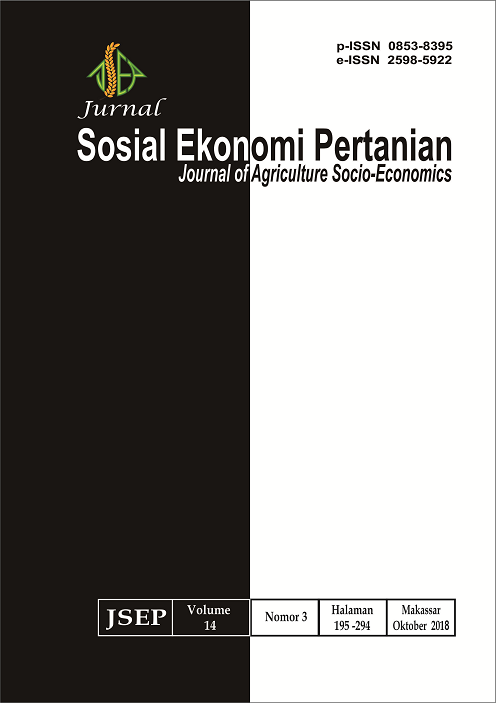DINAMIKA KEBIJAKAN PENGEMBANGAN BIODIESEL BERBAHAN BAKU KELAPA SAWIT INDONESIA
Isi Artikel Utama
Abstrak
Indonesia develops palm oil biodiesel driven by mandatory biodiesel which requires the use of biodiesel as a mixture of fuel oil by 30 percent. However, the development of the biodiesel can cause a trade off CPO for the production of biodiesel and palm cooking oil. The purpose of this study is to analyze the achievement of Indonesia's biodiesel production, and formulate policies for the development of the biodiesel industry with consideration of the balance of the food and non-food sectors. The data used are secondary data obtained from various related agencies such as the Central Bureau of Statistics, Ministry of Agriculture, BAPPEBTI, World Bank and other institutions related to this research which are analyzed by dynamic system models. The results of the analysis show that the development of Indonesian biodiesel has not been able to meet the level of the blending rate according to mandatory biodiesel. Efforts to increase the achievement of the blending rate level can be done by providing biodiesel subsidies. Export duty policy is also needed in an effort to maintain the stability of domestic CPO prices and the price of palm cooking oil. The export duty policy in accordance with Minister of Finance Regulation No. 136 of 2015 is more effectively implemented than Minister of Finance Regulation No. 140 of 2016.
Keywords : blending rate, dynamic system, mandatory biodiesel, policy scenario
Rincian Artikel
Referensi
Barlas Y. 1996. Formal Aspect of Model Validity and Validation in System Dynamics. System Dynamics Review. 12 (3): 183-210.
[BPS] Badan Pusat Statistik (ID). 2016. Statistik Indonesia 2016. Jakarta (ID): BPS.
[EBTKE] Direktorat Jenderal Energi Baru, Terbarukan dan Konservasi Energi (ID). 2013. Statistik ETBKE 2013. Jakarta (ID): ETBKE, ESDM.
Handoko H, Sa`id EG, Syaukat Y. 2012. Permodelan Sistem Dinamik Ketercapaian Kontribusi Biodiesel dalam Bauran Energi Indonesia 2025. Jurnal Manajemen Teknologi. 11(1): 15-27.
Makridakis S, ST Wheelwrigth, VE McGee. 1995. Metode dan Aplikasi Peramalan. Edisi Kedua. Untung SA, A Basith, penerjemah. Jakarta (ID) : Penerbit Erlangga. Terjemahan dari : Forecasting 2nd Edition.
Mohammadi S, Arshad FM, Bala BK, Iragimov A. 2015. System Dynamics Analysis of the Determinants of the Malaysian Palm Oil Price. American Journal of Applied Sciences. 12 (5): 355-362.
Obado J, Syaukat Y, Siregar H. 2009. The Impacts of Export Tax Policy on the Indonesian Crude Palm Oil Industry. ISSAAS. 15 (2): 107 -119.
Rifin A. 2014. The Effect of Crude Palm Oil Export Tax on Export and Prices. ASEAN Journal of Economics, Management and Accounting. 2 (1&2): 82-95.
Sembiring MT. 2015. Model Produksi Biodiesel Berbasis Minyak Sawit Untuk Memprediksi Harga Jual dan Besaran Subsidi [Disertasi]. Bogor(ID): Institut Pertanian Bogor.
Sipayung T, Purba J. 2015. Ekonomi Agribisnis Minyak Sawit. Bogor (ID): PASPI.
Siregar MA, Sembiring SA, Ramli. 2014. The Price of Palm-Cooking Oil in Indonesia: Antecedents and Consequences on the International Price and the Export Volume of CPO. Journal of Economics and Sustainable Development. 5(23): 227-234.
Wijaya H. 2015. Perumusan Kebijakan Biodiesel Kelapa Sawit Dengan Menggunakan Metode Regulatory Impact Analysis dan Model Sistem Dinamis [Tesis]. Bogor(ID): Institut Pertanian Bogor.

